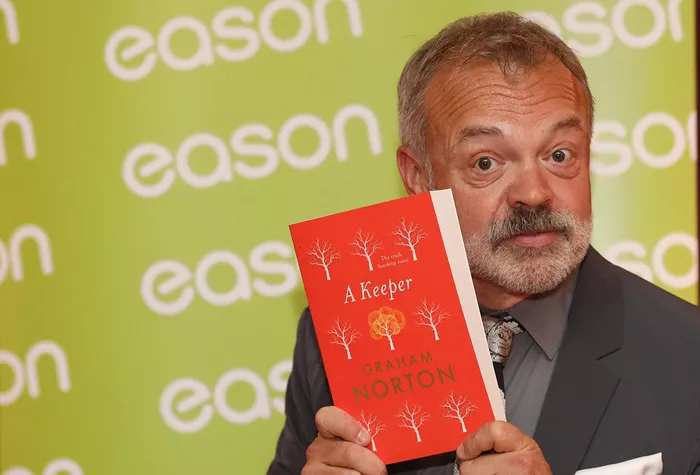Graham Norton, the celebrated television presenter and author, recently opened up about the books and writers that have profoundly influenced his relationship with literature and his own career as a writer.
Early Reading Inspirations
Norton recalls that his passion for reading began in childhood, sparked by jealousy of his older sister Paula’s reading habits. “I must have been six or seven when I managed to read The Mountain of Adventure by Enid Blyton,” he said. Though Blyton’s works have fallen out of favor in contemporary literary circles, Norton fondly remembers the excitement and immersive world they created.
Growing up, Norton’s favorite series was Flambards by KM Peyton, which he appreciated for its mature themes and subtle sensuality. Among his cherished childhood books were Grimble and Grimble at Christmas by Clement Freud, which he describes as “anarchic and knowing” with a humor he had not encountered before. These books also introduced him to the illustrations of Quentin Blake, which left a lasting impression.
A Defining Moment in Adolescence
A pivotal literary moment came during Norton’s teenage years when a supply teacher distributed novels in class. Norton randomly picked up Sylvia Plath’s The Bell Jar, a novel that “changed how I felt about books.” He praised the book’s humor, sophistication, and raw honesty, and identified strongly with the protagonist Esther Greenwood’s emotional depth. The teacher, Niall, remains a good friend to this day.
The Writer Who Almost Derailed His Writing Ambitions
At age 19, Norton encountered the opening of John Fowles’s Daniel Martin, where a vividly described plane crash scene convinced him that his own writing could never measure up. “What was the point? They would never be as good as these few pages,” he recalled. It took him over 30 years to overcome this doubt.
Finding the Desire to Write
Despite that setback, Norton had always enjoyed storytelling and setting scenes through short stories. He credits his early reading experiences for teaching him that storytelling was a craft he could join.
Returning to Dickens
Initially put off by Charles Dickens’s dense and dark style, Norton later rediscovered the novelist’s work through Oliver Twist, which he read for professional reasons. He was captivated by the engaging and entertaining qualities of Dickens’s writing. He especially admires a passage in A Tale of Two Cities where Sydney Carton contemplates his impending death, calling it “as beautiful and profound as anything I’ve ever read.”
Revisiting Classics
Norton rarely rereads books, but during summer visits to Ireland, he enjoys returning to classics such as Jane Austen’s Mansfield Park and Emily Brontë’s Wuthering Heights. He appreciates how revisiting these works reveals changes in perspective shaped by his own life experience.
Books Less Likely to Be Revisited
Though he loved the Just William series by Richmal Crompton as a preteen, Norton doubts he will find the same charm in them now.
Late Literary Discoveries
More recently, Norton discovered the works of Elizabeth Taylor, calling Mrs Palfrey at the Claremont “a stunning book” that balances wit, humor, and heartbreak without cruelty. He also ventured into science fiction, a genre he rarely reads, after being introduced to Octavia Butler’s Kindred, which he describes as “the most visceral novel about the horrors of slavery” he has encountered.
Current and Comfort Reads
Norton recently finished Long Island Compromise by Taffy Brodesser-Akner, a sprawling family saga he enjoyed. For comfort reading, he turns to Agatha Christie’s mystery novels, which he calls “a balm for any troubled soul.”

